By: Kathy Hubbard
This Sunday, August 31, is International Overdose Awareness Day. The United States Drug Enforcement Agency calls it “the world’s largest annual campaign to end overdose, remember those we have lost to an overdose, acknowledge the grief of the family and friends left behind, and renew our commitment to end overdose and related harms.”
They also note that overdose is one of the world’s worst public health crises. There were 80,391 reported drug overdose deaths in the U.S. in 2024. Although this is roughly a 29 percent drop from 2023, even one death from overdose is one too many, particularly if it’s someone you know and love.
We hear a lot about fentanyl on the news, so it’s no surprise that synthetic opioids such as fentanyl top the list of being responsible for the most overdose deaths. They are followed by psychostimulants (including methamphetamine), cocaine, and natural/semi-synthetic drugs.
The Centers for Disease Control and Prevention (CDC) reminds us that overdose knows no boundaries. “Our efforts must connect the many voices impacted by overdoses. We are united in grief, empowered together to transform loss into hope and action.”
Besides honoring those who’ve lost loved ones, the CDC says the goals of this day of awareness is also to “show support to people who use drugs and those in recovery that they are valued; continue to raise awareness about the risks of drug overdose; share information on available prevention, treatment and recovery support services, and to promote evidence-based practices and strategies to prevent and reduce drug-related harms.”
The Substance Abuse and Mental Health Services Administration (SAMHSA) says that it may be difficult to tell whether a person is experiencing an overdose. They say that if you’re not sure, you should treat it as if it were overdose, so you possibly could save a life.
“Here are some things to look for: unconsciousness or inability to awaken; slow or shallow beathing or difficulty breathing such as choking sounds or a gurgling/snoring noise from a person who cannot be awakened; discolored skin (especially in nails or lips), small, constricted ‘pinpoint pupils’ that don’t react to light.”
DEA says that the physical and psychological signs of an overdose vary depending on the type of drug taken and whether the drug was taken in combination with other substances. Besides the symptoms listed above, they say to look for seizures, convulsions or tremors, or an abnormally high body temperature. One who is overdosing may display violent or aggressive behavior, paranoia, agitation, disorientation or confusion.
In all fifty states, the medication called naloxone (Narcan) can be purchased without a prescription. It is a life-saving drug that can reverse the effects of opioid overdose. The first step to take when someone overdoses is to administer a dose of naloxone, and to call 911. This is a medical emergency, do not waste time getting emergency medical services to the scene.
“Naloxone can reverse an overdose from opioids, including heroin, illegally made fentanyl and fentanyl analogs, and prescription opioid medications. Often given as a nasal spray, naloxone is safe and easy to use,” CDC says.
Then the CDC says to “try to keep the person awake and breathing; lay the person on their side to prevent choking, and to stay with the person until emergency assistance arrives.” They also say that most states have laws that will protect both the person overdosing and the person providing aid from criminal penalties.
About the importance of International Overdose Awareness Day, DEA Administrator Anne Milgram said “On this International Overdose Awareness Day, we remember the lives lost and families impacted at the hands of a drug poisoning or overdose death.
“Today, and every day, we stand in support and with deep appreciation of our partners in public health and law enforcement who serve on the front lines every day working to prevent drug poisonings. We remain committed to our role in this fight to save lives by stopping fentanyl and other deadly drugs from impacting communities across America.”
Bonner General Behavioral Health provides excellent behavioral health and outpatient mental health services in a safe and therapeutic environment. Call 208-265-3756 for more information.
Kathy Hubbard is a member of the Bonner General Health Foundation Advisory Council. She can be reached at kathyleehubbard@yahoo.com. This article was written for publication in the Bonner County Daily Bee on August 27, 2025.

